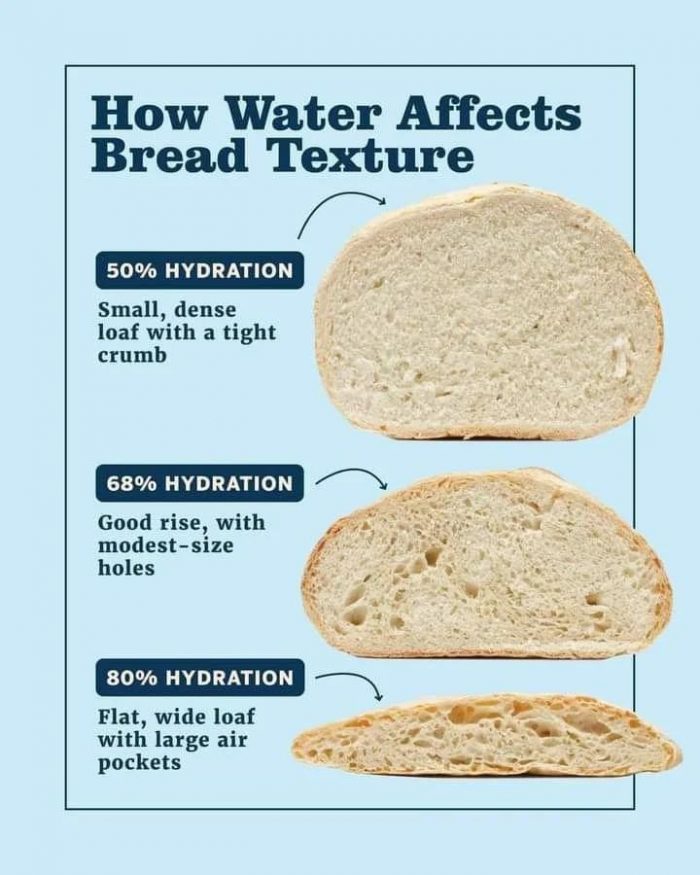
You’ve probably heard that the temperature of your water can affect the texture of your bread. But does it really? Yes, and here’s why: The percentage of water in your dough has a major impact on how it turns out. If you’re making 100% hydration dough, which is basically just flour and water—no yeast or salt!—then adjusting the temperature doesn’t matter (it’ll be baked into oblivion anyway). But if you’re using recipes with yeast or salt (which makes for greater complexity in flavor), then leaving them out would be an accident waiting to happen. So let’s look at how different water temperatures affect various kinds of doughs:
50% Hydration Dough
If you’re not sure what a 50% hydration dough is, it’s a very wet dough. It will be difficult to handle, and it will stick to your hands. It will take longer to bake than other breads because of its high moisture content (the water in the flour). When finished baking, this bread will be very soft and moist with a delicate crumb structure that tears easily when torn apart with a fork or knife.
68% Hydration Dough
When you’re working with a 68% hydration dough, it’s important to keep in mind that this is the most common type of bread. It has a soft, smooth texture that’s easier to handle than 50% hydration dough. However, it’s also less elastic than 50% hydration dough–which means it won’t spring back as much after stretching or pulling on it (but don’t worry about this too much).
80% Hydration Dough
80% hydration dough is very wet, soft and sticky. It’s difficult to work with, so it’s important to handle this dough gently. If you overwork it, the gluten strands will start to form too quickly and make a tough crust on your bread. The 80% hydration level also has a shorter shelf life than higher-hydration breads: if you’re not going to use all of your dough at once (for example if you want to make a large batch), consider storing some in the refrigerator for up to three days or freeze any unused portions for up to two months (this will depend on how much water was added). Finally, because there’s so much water in this type of bread recipe–and because gluten takes time for its bonds between proteins develop–you’ll need an extended rise time before baking: one hour at room temperature followed by another hour or two after refrigeration or freezing
The percentage of water in your bread has a major impact on texture, but if you hold it at the right temperature, it doesn’t matter. The amount of water you use doesn’t matter as much as how hot (or cold) it is when added to the mix. The temperature of your liquid affects how fast your dough rises and how much gluten forms during kneading. And since gluten contributes not only to chewiness but also to structure and stability, controlling its formation is crucial for achieving perfect results every time.
Whether you like your bread soft or crunchy, there are many factors that affect the texture of your bread. The most important one is how much water is in it, but if you hold it at the right temperature, it doesn’t matter how hot or cold your water was when you made the dough.
